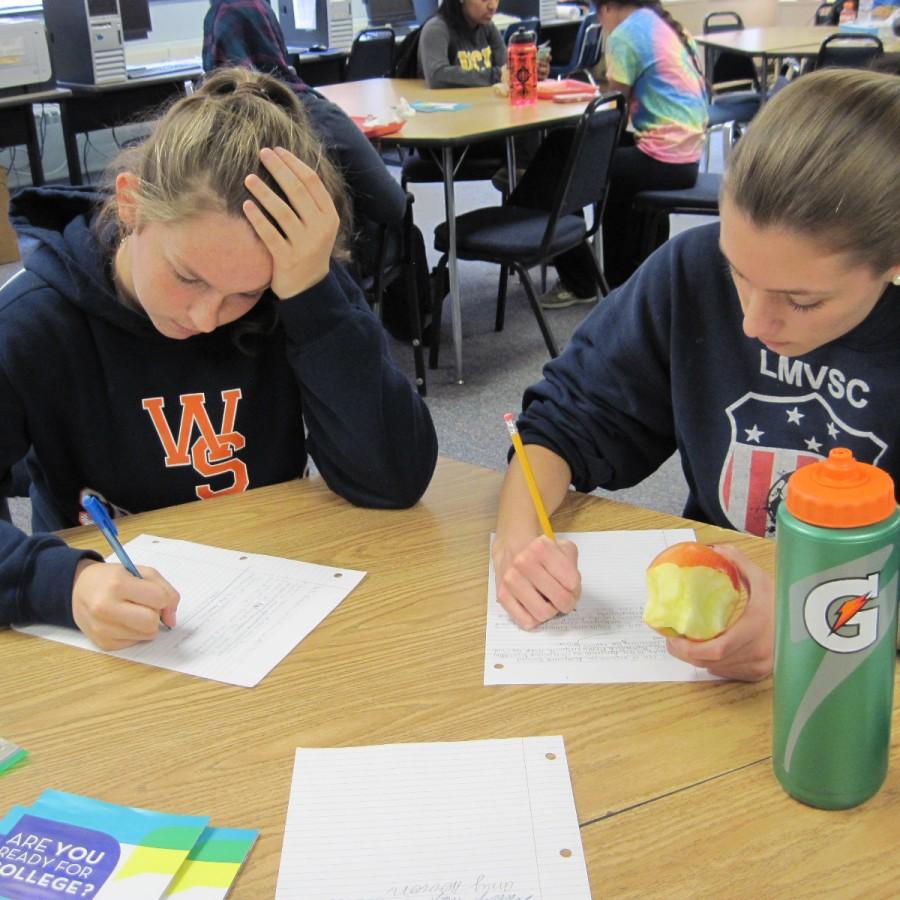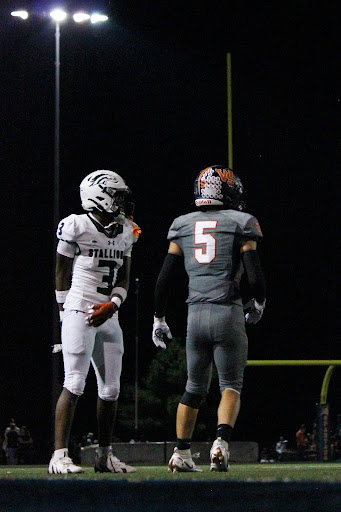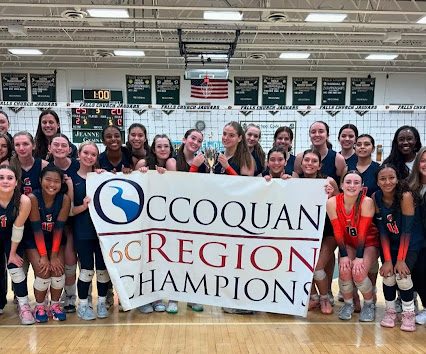Let’s do lunch —
But only in the cafeteria, Career Center & WSWC
Photo courtesy of Maggie Sandusky
The new rules placed on where students can eat lunch have left only a few places, all in close proximity to the cafeteria, open to food. The new policy is designed to lessen the load on overworked custodians but also keeps students from getting help during lunch, unless they want to go hungry.
December 15, 2015
Where to eat? WS narrows down your choices to just three places: the Writing Center, the Career Center and, of course, the cafeteria.
Most students opt to go to the cafeteria, turning the other two options into creative lunch spots.
The Writing Center and the Career Center receive a steady flow of students throughout the four lunches. Students eat there while getting help, or because they genuinely dislike the cafeteria and happily choose a more peaceful setting to eat lunch. Students who go to the Career Center are able to get help with college planning.
“I like to eat here because it’s quiet and Ms. [Tisa] Frederick is always able to answer my panicky college questions,” said senior Dorothy Adu-Amankwah.
Another option, the Writing Center, offers free peer-editing on any written piece you bring in and is open during all lunches. During A lunch, most of the tutors, who are free to eat lunch in the cafeteria during their assigned lunch, prefer to eat it in class.
“I like to eat here because I can eat whenever I’m hungry and it’s nice in here, it’s not loud like the cafeteria,” said junior Sophia Grober.
Eating in the room is easier for the tutors than going to lunch. They have friends in the room and can bring food there if they need it, so there’s no need to stress over finding who’s in their assigned lunch.
These two places were chosen as alternatives to the cafeteria because they’re easy to monitor and reduced the need for extensive cleanup.
“By restricting where you guys eat it limits how messy the school gets, not that you guys are bad, but with the remodel coming we need to limit how messy the school gets somehow because soon there will be dust and debris everywhere,” said Principal Mike Mukai.
Limiting lunch spots might keep the school cleaner but has proven to be a hassle for students who want to get help during lunch and who have traditionally worked through lunch in classes such as the performing arts and journalism.
“I’ve been called out a couple of times by the administration for letting students eat during class,” said Journalism teacher Brooke Nelson. “The trouble is that Oracle and Yearbook were scheduled during lunch on purpose. My students have always worked through lunch—they aren’t messy, and always clean up. They have a lot of work to do.”
And then, there are the teachers who ignore the “no food” rule.
Administrators often chase away a group of students who are eating in one classroom; those kids almost always end up lunching in another teacher’s room.
Teachers who ignore the “no food rule” in their classrooms are well-known to students and even to some of their colleagues.
In fact, the week before Thanksgiving, there were seasonal parties hosted in several classrooms way beyond the designated lunch spots.
“Admin shoos my students away, so they go to a more ‘food friendly’ room,” Nelson said.





